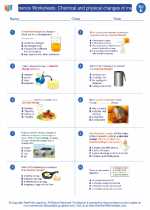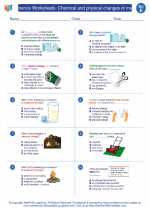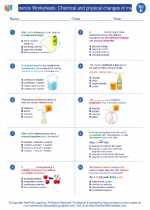Atomic Mass
Atomic mass is a fundamental concept in chemistry and physics that refers to the mass of an atom of a chemical element. It is a measure of the average mass of an atom, taking into account the different isotopes of that element and their respective abundance in nature.
Understanding Atomic Mass
Atoms are made up of protons, neutrons, and electrons. The atomic mass of an atom is primarily determined by the combined mass of its protons and neutrons, as the mass of electrons is much smaller and is typically not included in the atomic mass calculation.
Isotopes are atoms of the same element that have the same number of protons but different numbers of neutrons. This results in isotopes having different atomic masses. For example, carbon has several isotopes, including carbon-12, carbon-13, and carbon-14, which have atomic masses of 12, 13, and 14 atomic mass units (u), respectively.
Calculating Atomic Mass
The atomic mass of an element is calculated by taking the weighted average of the atomic masses of its isotopes, based on their natural abundance. This is typically represented as a decimal number on the periodic table, such as 12.01 for carbon.
The formula for calculating atomic mass is:
Atomic Mass = (Mass of Isotope 1 x Abundance of Isotope 1) + (Mass of Isotope 2 x Abundance of Isotope 2) + ...
Study Guide
- Atomic Structure: Understand the basic structure of an atom, including the roles of protons, neutrons, and electrons.
- Isotopes: Learn about isotopes and how they contribute to variations in atomic mass for a given element.
- Atomic Mass Calculation: Practice calculating the atomic mass of an element using the weighted average of its isotopes' masses and abundances.
- Periodic Table: Familiarize yourself with the periodic table and how atomic mass is represented for each element.
- Real-World Applications: Explore real-world applications of atomic mass, such as in determining the composition of chemical compounds and in nuclear reactions.
By understanding atomic mass and its significance, you'll have a solid foundation for comprehending the behavior of elements and their interactions in chemical reactions and physical processes.
.◂Science Worksheets and Study Guides Fifth Grade. Science Worksheets: Chemical and physical changes of matter

 Worksheet/Answer key
Worksheet/Answer key
 Worksheet/Answer key
Worksheet/Answer key
 Worksheet/Answer key
Worksheet/Answer key
 Vocabulary/Answer key
Vocabulary/Answer key
